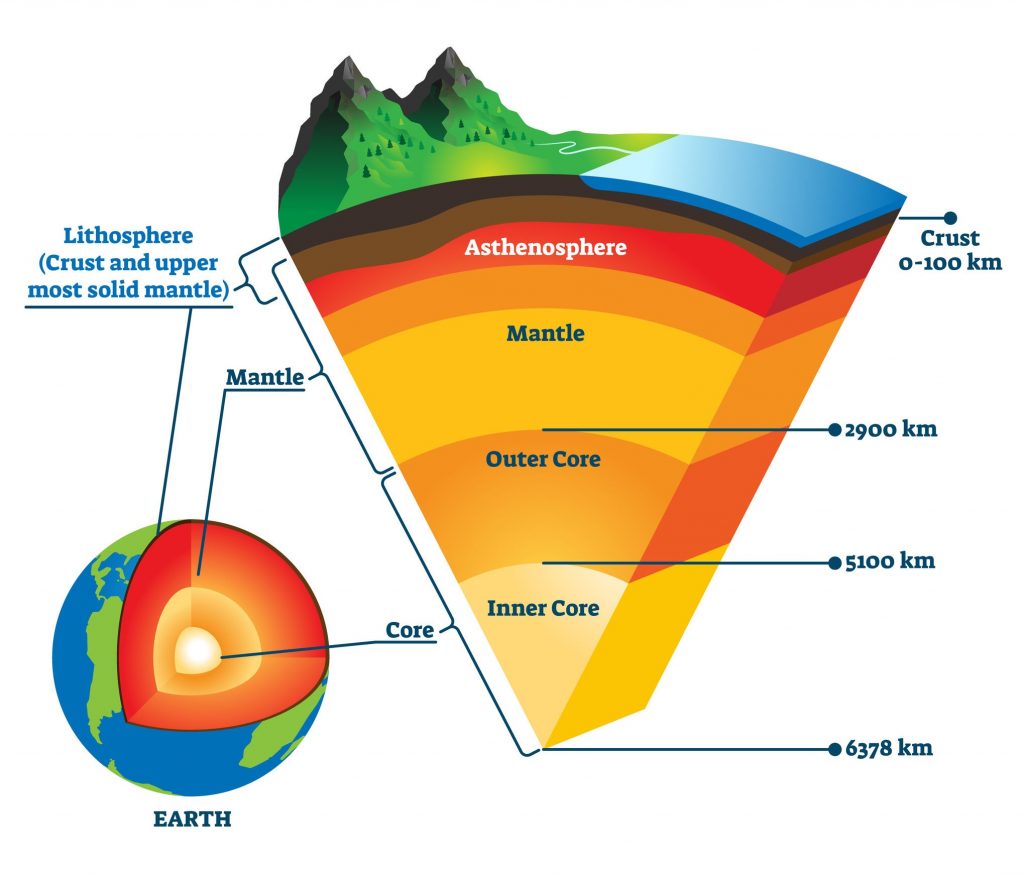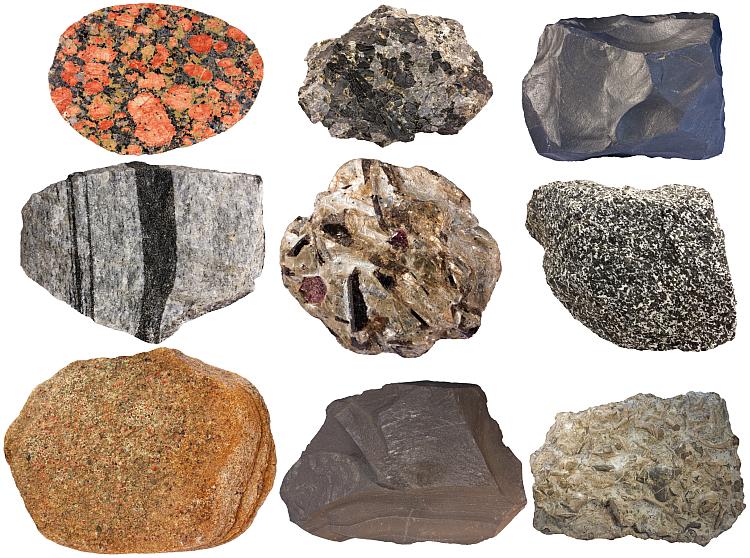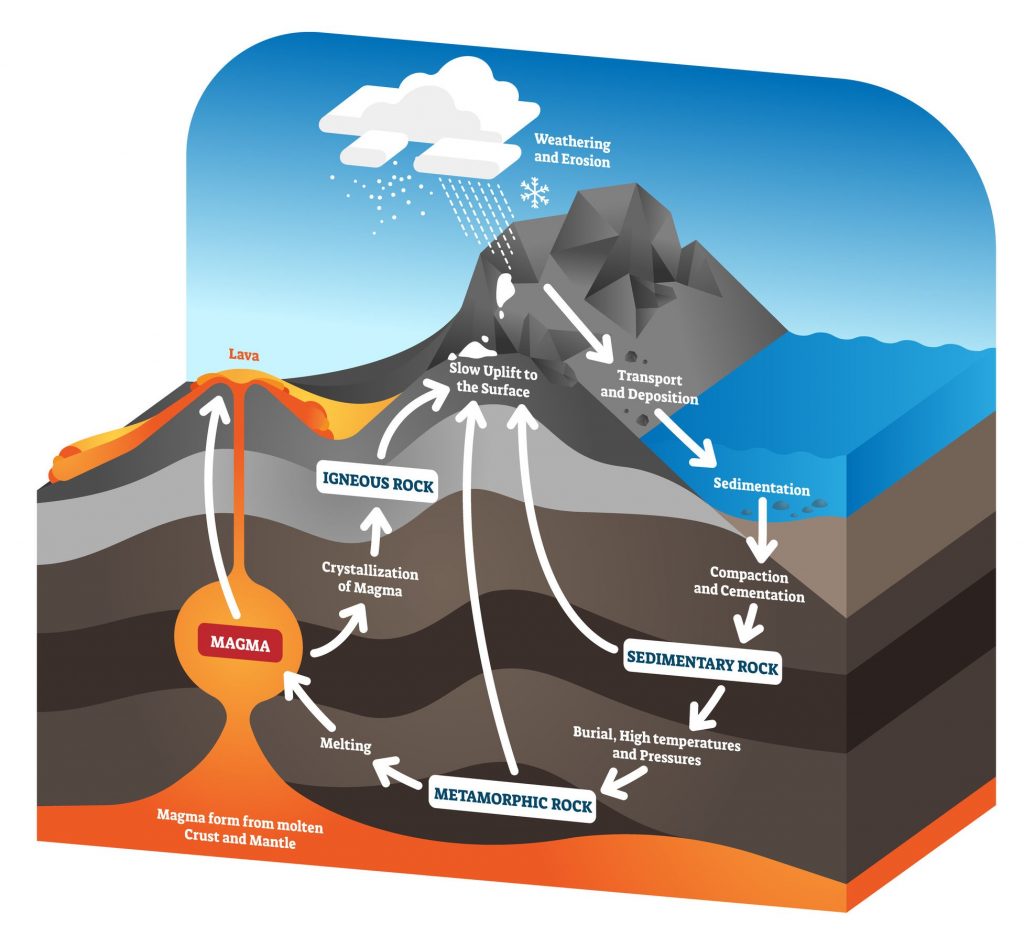Have you ever wondered what lies deep within the Earth? Do you know what makes the plates move and why there are volcano.

The Earth began to take shape about 4.5 billion years ago, iron and nickel quickly separated from other rocks and minerals to form the core of the new planet. The molten material that surrounded the core was the early mantle. Over millions of years, the mantle cooled. Water trapped inside minerals erupted with lava, a process called “outgassing.” As more water was outgassed, the mantle solidified.
The rocks that make up Earth’s mantle are mostly silicates—a wide variety of compounds that share a silicon and oxygen structure. Common silicates found in the mantle include olivine, garnet, and pyroxene. The other major type of rock found in the mantle is magnesium oxide. Other mantle elements include iron, aluminum, calcium, sodium, and potassium.

Common rocks in the crust. Igneous rocks in the first row: granite, gabbro, basalt. Metamorphic rocks in the second row: gneiss, schist, amphibolite. Sedimentary rocks in the third row: sandstone, shale, limestone.
The temperature of the mantle varies greatly from 1000° C near the crust to 3700° C near the core. The mantle is mostly solid rock and more viscous at tectonic plate boundaries and mantle plumes. Mantle rocks there are soft and able to move at great depth and pressure. The transfer of heat and material in the mantle helps determine the landscape of Earth.

Activity in the mantle drives plate tectonics, contributing to volcanoes, seafloor spreading, earthquakes and mountain-building. Plate Tectonics is the mechanism that moves the plates over time. This movement of the plates shapes the surface of the earth.

Find out whats new for you and your students with the latest Blogs from Australian Environmental Education.
- Junior Riverkeeper
- Exploring the Underwater World
- World Wetlands Day 2025
- Violet Snails, nature’s floating marvels
- Top 10 webpages
Follow Australian Environmental Education on Facebook

